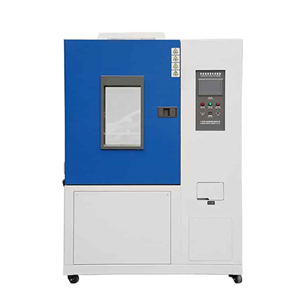Understanding Temperature Cycling Tests


Temperature cycling tests are an essential part of product testing and development. They involve subjecting a product to repeated cycles of extreme temperature changes to evaluate its durability, reliability, and performance under harsh environmental conditions. In this article, we will explore the concept of temperature cycling tests, their significance in product development, and the benefits they provide to manufacturers.
What is Temperature Cycling Testing?
Temperature cycling testing, also known as thermal cycling testing, is a process that involves exposing a product to alternating extreme temperatures to assess its ability to withstand thermal stress. The product undergoes repeated cycles of heating and cooling, simulating the temperature fluctuations it may experience during its normal usage or in extreme environmental conditions. This test helps identify potential weaknesses or failures that may occur as a result of thermal expansion and contraction.
Importance of Temperature Cycling Tests
Temperature cycling tests play a crucial role in product development for several reasons. Firstly, they help identify design flaws or weaknesses in products that may not be apparent under normal operating conditions. By simulating extreme temperature changes, manufacturers can assess how materials and components respond to thermal stress, allowing them to make necessary design improvements to enhance product durability and reliability.
Evaluating Material Compatibility
Temperature cycling tests are particularly important in industries where products are exposed to harsh temperature variations, such as automotive, aerospace, and electronics. These tests help evaluate the compatibility of different materials used in the product’s construction. Materials expand and contract at different rates when exposed to temperature changes, which can lead to mechanical stress and potential failure. By subjecting the product to temperature cycling, manufacturers can identify any material compatibility issues and select materials that can better withstand such thermal stress.
Detecting Potential Defects and Weaknesses
Temperature cycling tests are effective at detecting potential defects or weaknesses in products. During the cycles of heating and cooling, the expansion and contraction of materials can reveal hidden defects, such as cracks, delamination, or solder joint failures in electronic components. By detecting these issues early in the development process, manufacturers can take corrective measures to improve product quality and prevent costly failures in the field.
Improving Product Reliability
Product reliability is a critical factor for manufacturers, as it directly impacts customer satisfaction and brand reputation. Temperature cycling tests help improve product reliability by subjecting the product to accelerated aging. By simulating years of usage in a compressed timeframe, these tests identify potential issues that may arise over time, enabling manufacturers to make design improvements and enhance the overall reliability of the product.
Regulatory Compliance
In many industries, products must meet specific regulatory standards before they can be placed on the market. Temperature cycling tests help manufacturers ensure compliance with these standards. By subjecting the product to rigorous temperature cycling, manufacturers can evaluate its performance and reliability under extreme conditions outlined in the regulations. This testing provides confidence that the product will meet regulatory requirements and perform reliably in real-world scenarios.
Cost Efficiency
Temperature cycling tests offer cost efficiency for manufacturers in the long run. By uncovering potential issues during the testing phase, manufacturers can make necessary design improvements before going into mass production. This helps avoid costly recalls, repairs, or warranty claims that may arise from product failures in the field. Additionally, by optimizing product designs through temperature cycling tests, manufacturers can reduce material waste, minimize production delays, and improve overall production efficiency.
Conclusion
Temperature cycling tests are a vital component of product development, helping manufacturers evaluate product durability, reliability, and performance under extreme temperature conditions. These tests play a crucial role in identifying potential weaknesses, improving material compatibility, detecting defects, enhancing product reliability, ensuring regulatory compliance, and achieving cost efficiency. By incorporating temperature cycling tests into their product development process, manufacturers can deliver high-quality, reliable products that meet customer expectations and withstand the challenges of real-world environments.


